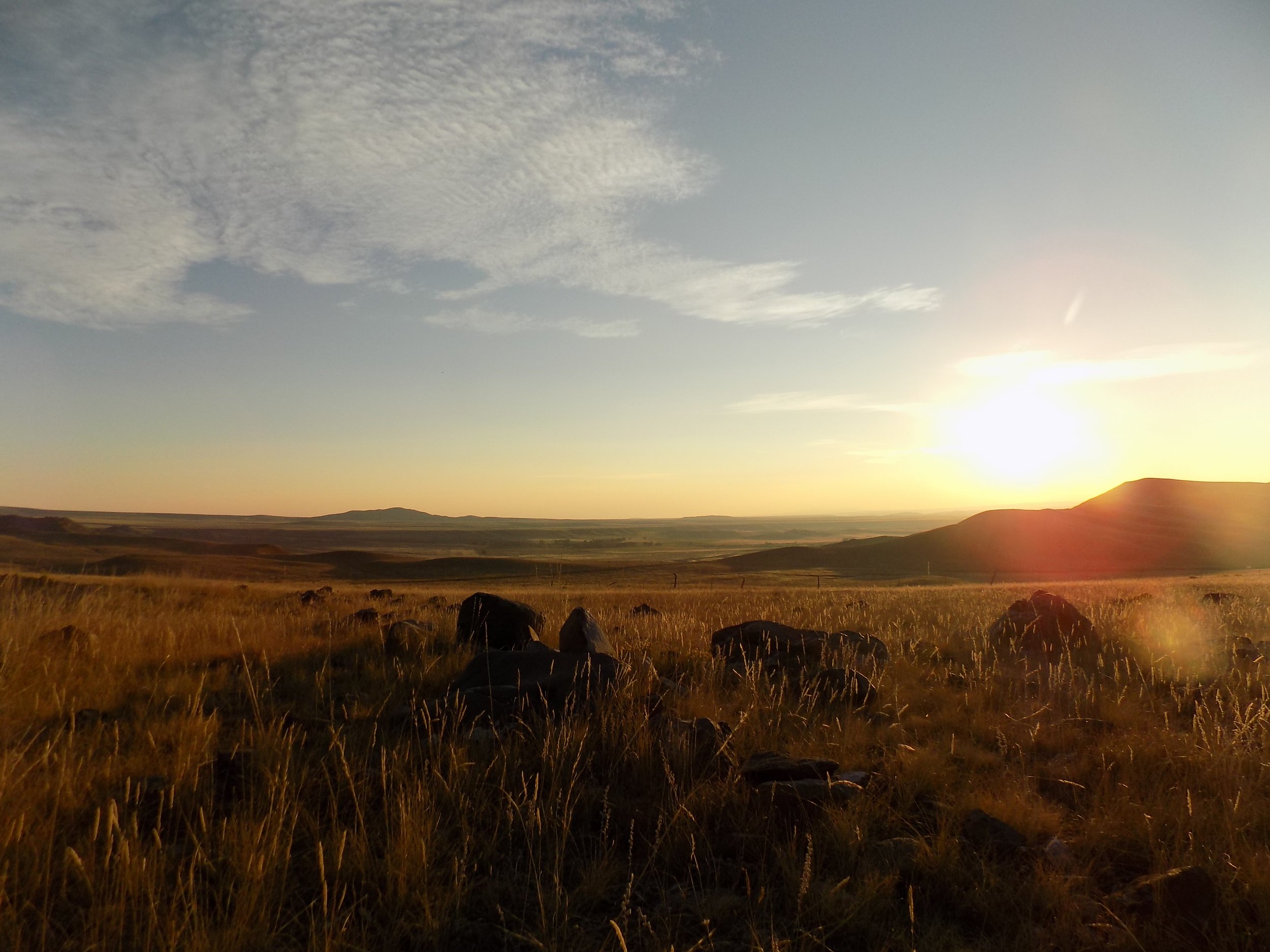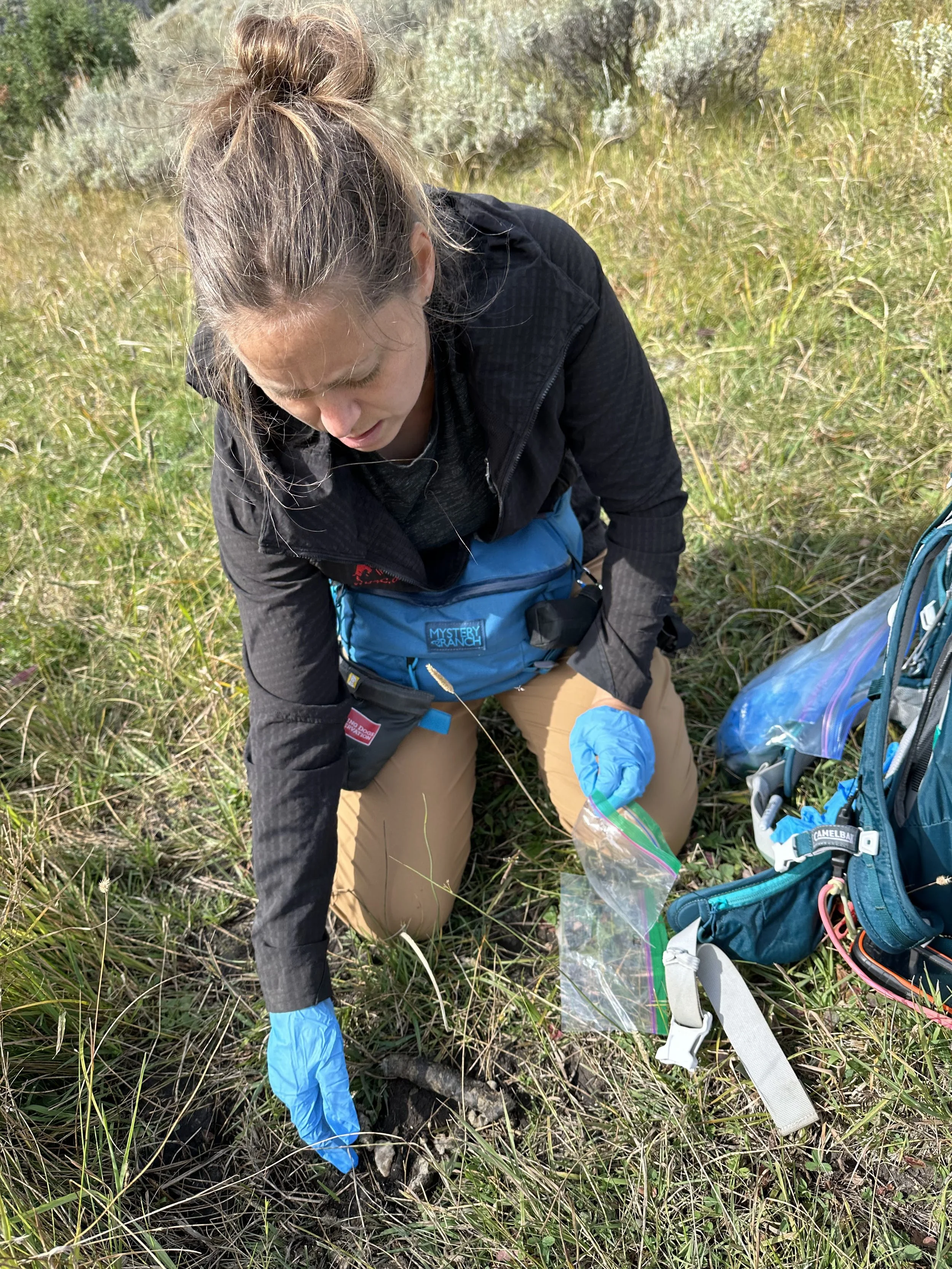
News and Publications
Children’s Book Released
Two real canine heroes of Working Dogs for Conservation - legacy dogs Wicket and Pepin - were the inspiration for Tucker, the dog in this wonderful children’s book.
Written by WD4C friend and supporter, Carol A. Foote, and illustrated by Larry Day, Trouble Dog is the exciting story of an unwanted dog who found the perfect job and a loving home. Follow along with all of Tucker’s conservation adventures!
Visit the author’s website at www.carolafoote.com to learn more and order a copy. 50% of the author’s proceeds are donated to help support the dogs here at Working Dogs for Conservation!
Access the free education resource guide to accompany Trouble Dog HERE.

From the pages of top scientific journals to headlines in major news outlets, Working Dogs for Conservation has earned recognition for its innovative approach to conservation. Their dogs are helping to protect wildlife and wild places in powerful, tangible ways around the world.
Scientific Publications
-
Journal of Raptor Research
Buij, R., Richards, N.L., Rooney, E., Ruddock, M., Horváth, M., Krone, O., Mason, H., Shorrock, G., Chriél, M., Deák, G., Demerdzhiev, D., Deutschová, L., Doktorová, S., Inderwildi, E., Jaspers, V.L.B., Jenny, D., Mikuska, T., Miskovic, M., Mizera, T., Nagy, A., Ntemiri, K., O'Donoghue, B., Ružić, M., Saravia-Mullin, V., Stoychev, S., Tavares, J., Andevski, J., van Tulden, P., Velevski, M., Vermouzek, Z., Vrezec, A., Zorrilla, I., McClure, C.J.W. (2025) Raptor Poisoning in Europe between 1996 and 2016: A Continental Assessment of the Most Affected Species and the Most Used Poisons. Journal of Raptor Research, 59(2):1-19.
https://doi.org/10.3356/jrr2373
Parasites & Vectors
Koser, T., Hurt, A., Thompson, L., Courtemanch, A., Wise, B., and Cross, P. (2025) Scent detection dogs detect a species of hard tick, Dermacentor albipictus, with comparable accuracy and efficiency to traditional tick drag surveys. Parasites & Vectors, 18 : 126-135.
-
Ecosphere
Fuller, A.K., Augustine, B.C., Clifton, E.H., Hajek, A.E., Blumenthal, A., Beese, J., Hurt, A., and Brown-Lima, C.J. (2024) Effectiveness of canine-assisted surveillance and human searches for early detection of invasive spotted lanternfly. Ecosphere, 15(12): e70113.
-
Journal of Veterinary Forensic Sciences
David Fernández., R.A., Piedrola Negreira, Ó., Cabañés Rodríguez,D., Ramírez Rodríguez, S., Montes Martín, J., Pérez Fuentes, A.A., Blázquez Ranquel, J.A., Briones Dieste, V., Richards, N.L., and Bárcena Asensio, C. (2023). Is Bradykinin 1-5 a Reliable Biomarker for Pain in Dogs? Journal of Veterinary Forensic Sciences, 2(1), DOI: 10.32473/JVFS.2.1.130161
-
Richards, N.L., Hartman, J.L., Parker, M., Wendt, L., and Salisbury, C. (2021). The role of conservation detection and ecological monitoring in supporting environmental forensics and enforcement initiatives. In: Adams, H. and Underkoffler, S. (eds), Wildlife Forensic Sciences and Conservation Medicine. Springer International Publishing.
Liczner, A.R., MacPhail, V.J., (Smith) Woollett, D.A. Richards, N.L., Colla S.R. (2021). Training and usage of detection dogs to better understand bumble bee nesting habitat: Challenges and opportunities. PLOSONE, May 12, 2021. https://doi.org/10.1371/journal.pone.0249248
Liczner, A.R., MacPhail, V.J., (Smith) Woollett, D.A. Richards, N.L., Colla S.R. (2021). Training and usage of detection dogs to better understand bumble bee nesting habitat: Challenges and opportunities. S1 Appendix: Additional considerations for using detection dogs to find bumble bee nests and in related conservation efforts PLOS ONE, May 12, 2021. https://doi.org/10.1371/journal.pone.0249248
Richards, N.L., and Whitelaw, A. (2021). Beware veterinary product and pesticide exposure risks to working and pet dogs in agricultural areas. The Shepherd Magazine.
-
LaGuardia, M.J., Richards, N.L., Hale, R.C. (2020). A noninvasive environmental monitoring tool for brominated flame-retardants (BFRs) assisted by conservation detection dogs. Chemosphere, 260: 127401 [Part of Special Issue: The 9th International Symposium on Flame Retardants, Montréal, Québec – 2019].
Wells, K., Butterworth, A., and Richards, N.L. (2020). A review of secondary pentobarbital poisoning in scavenging wildlife, companion animals and captive carnivores. Journal of Veterinary Forensic Science (Inaugural Issue). 1(1): 1-15
Whitehouse-Tedd, K., Richards, N., and Parker, M. (2020). Dogs and Conservation: emerging themes and considerations. Journal of Vertebrate Biology. 69(3): E2004. From Special Issue: Dogs and Conservation: emerging themes and considerations. DOI: 10.25225/jvb.E2004 (Guest Editor) https://bioone.org/journals/journal-of-vertebrate-biology/volume-69/issue-3/jvb.E2004/Dogs-and-Conservation-emerging-themes-and-considerations/10.25225/jvb.E2004.full
-
Wilbert, T.R., Woollett (Smith), D.A., Westphal, M.F., Whitelaw, A., Ralls, K., and Maldonado, J.E. (2019) Distribution, fine-scale subdivision, and population size of San Joaquin kit foxes in the Ciervo-Panoche Natural Area, California. Conservation Genetics. https://doi.org/10.1007/s10592-018-1122-3
Statham, M.J., Woollett (Smith), D.A., Fresquez, S., Pfeiffer, J., Richmond, J., Whitelaw, A., Richards, N.L., Westphal, M.F., and Sacks, B.N. (2019). Noninvasive identification of herpetofauna: Pairing conservation dogs and genetic analysis. Journal of Wildlife Management 1–9; 2019; DOI: 10.1002/jwmg.21772
-
Richards, N.L., Whitelaw, A., and Bollinger, T. (2018) Invisible and deadly: Carcasses of euthanized animals can kill scavenging wildlife and pet dogs. Western Canadian Game Warden Magazine, Autumn 2018 edition, pp. 50-51.
Richards, N.L., and Woollett, D. (2018) Nose for trouble: Using dogs to detect rodenticides. AWI Quarterly, Summer 2018. Animal Welfare Institute, Washington DC. 67(2): 20.
Richards, N.L., Tomy, G., Kinney, C.A., Nwanguma, F.C., Godwin, B., and (Smith) Woollett, D.A. (2018). Using scat detection dogs to monitor environmental contaminants in sentinel species and freshwater ecosystems, pp. 193-262. In: Richards, N.L. (2018). Using Detection Dogs to Monitor Aquatic Ecosystem Health and Protect Aquatic Resources, Palgrave UK, 337 pp.
Richards, N.L. (2018). Using Detection Dogs to Monitor Aquatic Ecosystem Health and Protect Aquatic Resources, Palgrave UK, 337 pp.
Using scat detection dogs to monitor environmental contaminants in sentinel species and freshwater ecosystems, pp. 193-262. In: Richards, N.L. (2018). Using Detection Dogs to Monitor Aquatic Ecosystem Health and Protect Aquatic Resources, Palgrave UK, 337 pp.
-
Kretser, H., Glennon, M., Whitelaw, A., Hurt, A., Pilgrim, K. and M. Schwartz (2016). Scat-detection dogs survey low density moose in New York. Alces: A Journal Devoted to the Biology and Management of Moose, 52: 55-66.
-
Arandjelovic, M., Bergl, R.A., Ikfuingei, R., Jameson, C., Parker, M., and L. Vigilant (2015) Detection dog efficacy for collecting faecal samples from the critically endangered Cross River gorilla (Gorilla gorilla diehli) for genetic censusing. Royal Society Open Science, 2: 140423. http://dx.doi.org/10.1098/rsos.140423.
Richards, N.L. (2015). Detection dogs help find contaminants along Montana waterways. Animal Welfare Institute Quarterly. Spring issue, Volume 64 (2).
Taggart, M., Richards, N.L., and Kinney, C. (2015). Impacts of pharmaceuticals on terrestrial wildlife. In: Hester, R. (ed.), Pharmaceuticals in the Environment, (pp. 216-254). Issues in Environmental Science & Technology. Royal Society of Chemistry.
Wilbert, T. R., Woollett (Smith), D. A., Whitelaw, A., Dart, J., Hoyt, J. R., Galen, S., Ralls, K, Meade, D. E., and J.E . Maldonado (2015). Non-invasive baseline genetic monitoring of the endangered San Joaquin kit fox on a photovoltaic solar facility. Endangered Species Research, 27: 31-41.
Richards, N., and Woollett, D (2015) Use of detection dogs in conservation efforts. McGraw-Hill 2014 Yearbook of Science & Technology
Beckmann, J.P., Waits, L.P., Aimee Hurt, A., Whitelaw, A., and S. Bergen (2015). Using detection dogs and RSPF models to assess habitat suitability for bears in greater Yellowstone. Western North American Naturalist, 75(4):396-405.
-
Hurt, A., D. Guscio, D.A. Tirmenstein, N. Richards, A. Burch and M. Marler. Using Search Dogs for Biological Eradication Programs - A Tale about Dyer's Woad (Isatis tinctoria L.), pp.73–86. In: Schwarzländer, M. and J.H. Gaskin, Eds. 2014 Proceedings of the 3rd Northern Rockies Invasive Plants Council Conference February 10-13, 2014. Airway Heights, WA. USDA Forest Service, Forest Health Technology Enterprise Team, Morgantown, West Virginia. FHTET-2016-03. 189 pp.
Fajardo, I., Ruiz, A., Velasco, F., Zorrilla, I., and Richards N.L. (2014) La investigación en los casos de uso ilegal de veneno: procedimiento y técnicas de investigación. Nuevos retors, nuevos métodos (Procedures and techniques for investigating cases of illegal use of poison: responding to new challenges with new methods). In: Bodega Zugasti, D. de la (ed.), Uso Ilegal de Cebos Envenenados. Investigación y Análisis Jurídico (Illegal Use of Poisoned Baits; Investigation and Judicial Analyses), (pp. 55-85). SEO SEO/BirdLife-Proyecto Life + VENENO, Madrid.
Richards, N.L., Hall, S.W., Harrison, N.M., Gautam, L., Scott, K.S., Dowling, G., Zorilla, I. and Fajardo, I. (2014). Merging wildlife and environmental monitoring approaches with forensic principles: application of unconventional and non-invasive sampling in eco-pharmacovigilance. Journal of Forensic Research 5:228, doi: 10.4172/2157-7145.1000228.
Woollett (Smith), D., Hurt, A., and Richards, N.L. (2014). The current and future roles of free-ranging detection dogs in conservation efforts. In: Gompper, M.E. (ed), Free-Ranging Dogs and Wildlife Conservation (pp. 239-264). Oxford University Press.
-
Richards, N.L. (2012) Carbofuran and Wildlife Poisoning: Global Perspectives and Forensic Approaches, John Wiley & Sons UK, 349 pp.
Dahlgren, D.K., R.D. Elmore, D.A. Smith, A. Hurt, E.B. Arnett, and J.W. Connelly. 2012. Use of dogs in wildlife research and management. In Silvy, N.J. (ed), Wildlife techniques manual: research. (Volume I, pp. 140-153). Johns Hopkins University Press.
-
Duggan, J.M., Heske, E.J., Schooley, R.L., Hurt, A. and A. Whitelaw (2011). Comparing detection dog and livetrapping surveys for a cryptic rodent. Journal of Wildlife Management, 75: 1209-1217.
Reed, S.E., Bidlack, A.L., Hurt, A. and W.M. Getz (2011). Detection distance and environmental factors in conservation detection dogs surveys. Journal of Wildlife Management, 75: 243-251.
Parker, M. (2011). Wildlife Detection Dogs; Specially trained, these canines work hard for conservation. The Wildlife Professional, 5: 47-49.
-
Bozarth, C.A., Alva-Campbell, Y.R., Ralls, K., Henry, T.R., Smith, D.A., Westphal, M.F. and J.E. Maldonado (2010). An efficient noninvasive method for discriminating among faeces of sympatric North American canids. Conservation Genetics Resources, 2: 173-175.
Ralls, K., Sharma, S., Smith, D.A., Bremner-Harrison, S., Cypher, B.L. and J.E. Maldonado (2010). Changes in kit fox defecation patterns during the reproductive season: Implications for noninvasive surveys. Journal of Wildlife Management, 74: 1457-1462.
-
Hurt, A. Spring 2009. Beating the bushes for carnivore scat. Animal Welfare Institute Quarterly.
Hurt, A. and D. Smith. 2009. Conservation Dogs. In Helton, W. (ed), Canine Ergonomics: The science of working dogs. Pp. 175-194.Taylor and Francis.
Duggan, J., E. Heske, R. Schooley, and A. Hurt. June 2009. Finding Franklin’s. Outdoor Illinois.
-
Mackay, P., D.A. Smith, R. Long, and M. Parker. 2008. Scat Detection Dogs. In: Long, R., P. Mackay, J. Ray and W. Zielinski (eds.), Noninvasive Survey Methods for Carnivores (pp. 183-222). Island Press.
-
Smith, D.A., Ralls, K., Cypher, B.L., Clark, Jr., H.O., Kelly, P.A., Williams, D.F. and J.E. Maldonado (2006). Relative abundance of endangered San Joaquin kit foxes (Vulpes macrotis mutica) based on scat-detection dog surveys. Southwestern Naturalist, 51: 210-219.
Reindl-Thompson, S.A., Shivik, J.A., Whitelaw, A., Hurt, A. and K.F. Higgins (2006). Efficacy of scent dogs in detecting black-footed ferrets at a reintroduction site in South Dakota. Wildlife Society Bulletin, 34: 1435-1439.
Smith, D. A., Ralls, K., Hurt, A., Adams, B., Parker, M. and J.E. Maldonado (2006). Assessing reliability of microsatellite genotypes from kit fox fecal samples using genetic and GIS analyses. Molecular Ecology, 15: 387-406.
-
Smith, D.A., Ralls, K., Cypher, B.L. and J.E. Maldonado (2005). Assessment of scat-detection dog surveys to determine kit fox distribution. Wildlife Society Bulletin, 33: 897-904.
-
Ralls, K. and D.A. Smith (2004). Latrine use by San Joaquin kit foxes (Vulpes macrotis mutica) and coyotes (Canis latrans).Western North American Naturalist, 64: 544-547
-
Smith, D., K. Ralls, A. Hurt, B. Adams, M. Parker, B. Davenport , MC Smith, JE Maldonado 2003. Detection and accuracy rates of dogs trained to find scats of San Joaquin kit foxes (Vulpes macrotis mutica) Animal Conservation 6:339–346.
-
Parker, M. 2001. Non-lethal management and compensation programs for predators. Botswana National Technical Predator Management and Conservation Workshop Proceedings, Maun, Botswana. Dept. Wildlife and National Parks, Botswana.
-
Hurt A., Davenport, B. and E. Greene (2000).Training dogs to distinguish between black bear (Ursus americanus) and grizzly bear (Ursus arctos) feces. University of Montana Under-Graduate Biology Journal.












